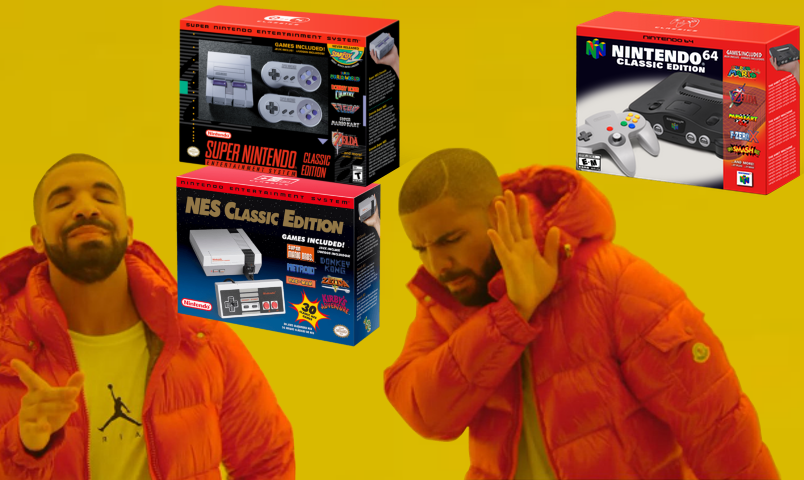
 intendo's Classics line has been nothing short of a success, even if that success only means that the limited stock that was initially released - and in some cases, already replenished with fresh units - have been quickly and completely sold out. At the very least, people are keenly and acutely aware of the SNES Classic and its infamously-under-produced-and-forthcoming-again predecessor, the NES Classic. However, people are already looking forward to theoretical successors, and the Nintendo 64 seems ripe for the Classics line treatment. After all, the N64 had a healthy fan-base and some notable games, but are these qualities really enough for it to actually make for a good “Classics” machine?
intendo's Classics line has been nothing short of a success, even if that success only means that the limited stock that was initially released - and in some cases, already replenished with fresh units - have been quickly and completely sold out. At the very least, people are keenly and acutely aware of the SNES Classic and its infamously-under-produced-and-forthcoming-again predecessor, the NES Classic. However, people are already looking forward to theoretical successors, and the Nintendo 64 seems ripe for the Classics line treatment. After all, the N64 had a healthy fan-base and some notable games, but are these qualities really enough for it to actually make for a good “Classics” machine?
Well, no, not especially and there are quite a few factors that support this.
First, let's discuss the Nintendo 64 itself. The Nintendo 64 was launched in North America in 1996 to a voracious crowd that decimated its supply in the kind of way you'd expect of a Nintendo's launch; seemingly under-produced, rarely restocked... you know the drill. The system itself had four controller ports built in, relied on cartridges (with a woefully small capacity compared to CD ROMs) and other features like analogue controllers, expandable bits that increased the system's power and, of course, a decent selection of strong first party games over the course of its lifetime. So, all of the ingredients that would make a great classic mini system right—still no, and not all the nostalgia in the world could prove otherwise.

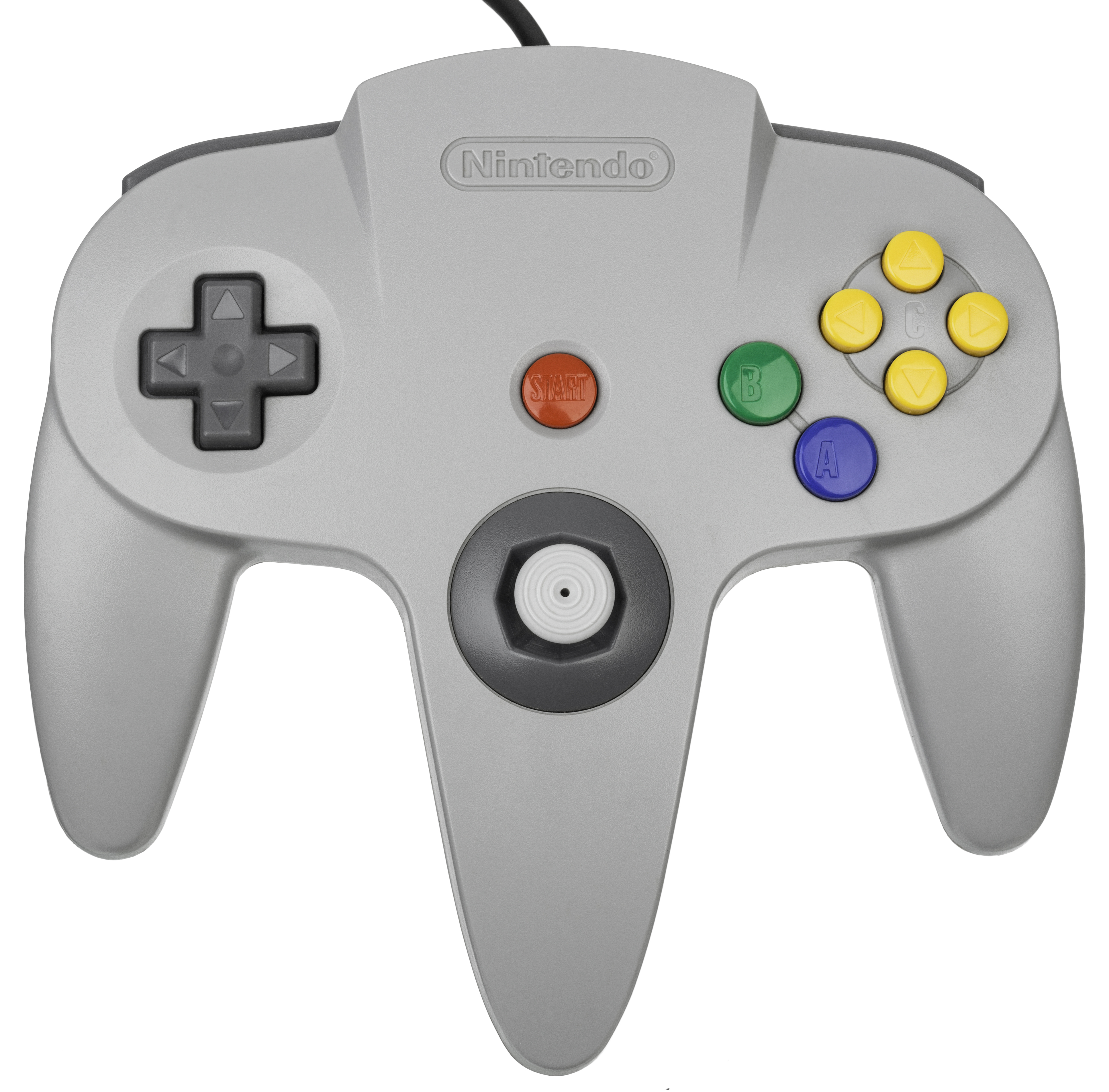 Sure, the system itself could easily be shrunken down in the same sort of way that the NES and SNES Classics were, making for a cute, compact effigy that plays all your favorite N64 games, but the controllers – which, in the case of the NES and SNES Classic systems – would be full-size. It also doesn't help that the N64's controller is generally regarded as Nintendo's worst. Its three-pronged design had too many “positions” for the player to really feel comfortable in any situation and even then, the “home” position where the player grips the middle prong to access the analogue stick was pretty uncomfortable over long play sessions if their hands weren't comically small. Yet ironically, the controller was seemingly designed for larger hands.
Sure, the system itself could easily be shrunken down in the same sort of way that the NES and SNES Classics were, making for a cute, compact effigy that plays all your favorite N64 games, but the controllers – which, in the case of the NES and SNES Classic systems – would be full-size. It also doesn't help that the N64's controller is generally regarded as Nintendo's worst. Its three-pronged design had too many “positions” for the player to really feel comfortable in any situation and even then, the “home” position where the player grips the middle prong to access the analogue stick was pretty uncomfortable over long play sessions if their hands weren't comically small. Yet ironically, the controller was seemingly designed for larger hands.
Worse still, what about the Rumble Pak, Or the Controller Pak to save games and lap times and so forth—the Classics have save states, so memory is no issue but the Rumble pack is a totally different situation. It would have to be built-in or sold separately and then what? A mad dash for a battery-powered vibrator for your controller that resales for $400 on eBay due to scarcity? Worse still, the Rumble feature could be completely omitted.
The NES and SNES controllers are simple. They have one “configuration” and that's it. Many people consider the Super NES controller to be the perfect balance of form and function even after all this time. But most importantly, they're small, compact, easy-to-use. And, as was the case with the SNES Classic, you can put two in the box without the packaging exceeding that of its direct predecessor.
More so than their huge size though, the N64's build quality was, frankly, shit. The analogue stick was notoriously flimsy and wore out quickly compared to, well, almost every other analogue controller stick before or since. Having so much pressure on such a small axis wore the plastic literally to dust in very little time, especially if you played any of the Mario Party games. The GameCube controller’s design is much better by comparison and has more or less been adapted to every home console – save for its thumb pad – on every major Nintendo Console until the Switch's Joy-Cons. Even the Switch Pro Controller has similar analogue sticks. If a Nintendo 64 Classic happened, they would probably have to implement this GameCube-style analogue stick (which is definitely possible) just to keep the controller viable for extended use.
Another option would be to team up with Hori to re-release a Nintendo 64 Classic with the vastly smaller and more reliable Hori Pad Mini for Nintendo 64 as its core controller; smaller than a GameCube controller and vastly more reliable. However, purists are most likely to shun anything but the fragile, monstrous original controller, making for a very fine line for Nintendo to skirt should they go forward with a machine such as this.

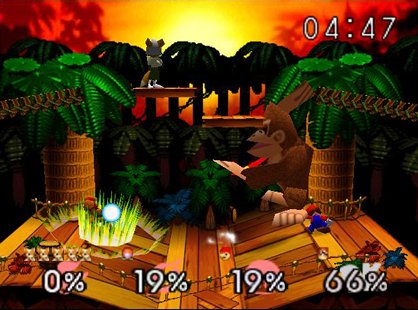 The NES Classic only came packaged with one controller. This, combined with insanely small numbers for extra controllers – I've only ever seen a single unit in the wild – meant that players looking to play two-player games with a friend or family member had to resort, more often than not, to a 3rd party solution. Nintendo addressed this by adding a second controller to every SNES Classic, which definitely reduced headaches when it came to procuring inputs for Player 2. However, the Nintendo 64 takes it a step further; many games offered 4-player support, so this leads to another huge problem for a Nintendo 64 Classic; does Nintendo put four controllers in the box? Alternatively, does it include only two and risk under-producing – or, indeed, over-producing – extra controllers? Then you have to ask yourself if there would there be different colors? Would the size of the N64 classic suffer with the inclusion of four controller ports? Does Nintendo only allow for two players, dangling a tantalizing four-player carrot in front of the masses' noses, never to be reached? Would splitters or adapters be a necessity?
The NES Classic only came packaged with one controller. This, combined with insanely small numbers for extra controllers – I've only ever seen a single unit in the wild – meant that players looking to play two-player games with a friend or family member had to resort, more often than not, to a 3rd party solution. Nintendo addressed this by adding a second controller to every SNES Classic, which definitely reduced headaches when it came to procuring inputs for Player 2. However, the Nintendo 64 takes it a step further; many games offered 4-player support, so this leads to another huge problem for a Nintendo 64 Classic; does Nintendo put four controllers in the box? Alternatively, does it include only two and risk under-producing – or, indeed, over-producing – extra controllers? Then you have to ask yourself if there would there be different colors? Would the size of the N64 classic suffer with the inclusion of four controller ports? Does Nintendo only allow for two players, dangling a tantalizing four-player carrot in front of the masses' noses, never to be reached? Would splitters or adapters be a necessity?
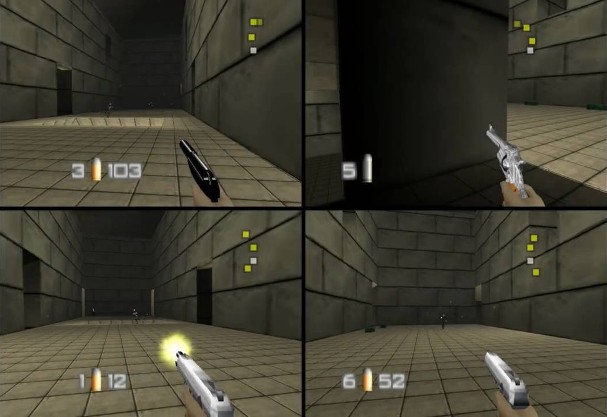 The fact that so many Nintendo 64 games' popularity hinged on the 4-player aspect to them means that without 4-player support or the means to access 4-player support, the experience would definitely suffer. The rose-tinted glasses of nostalgia are powerful and if the best parts of player's favorite N64 can't be relived, it flies in the face of what the Classic Line is and strives to be.
The fact that so many Nintendo 64 games' popularity hinged on the 4-player aspect to them means that without 4-player support or the means to access 4-player support, the experience would definitely suffer. The rose-tinted glasses of nostalgia are powerful and if the best parts of player's favorite N64 can't be relived, it flies in the face of what the Classic Line is and strives to be.
4-player support is a critical feature to the Nintendo 64, so it absolutely has to be included or the system would be rendered almost completely pointless. The number of players the N64 supported also doubles back to the points we made on the controllers themselves. They're so huge that the packaging would be significantly larger than that of the NES and SNES classics if a full set of them were to be included, possibly even the switch or – dare we say it – the original Nintendo 64.

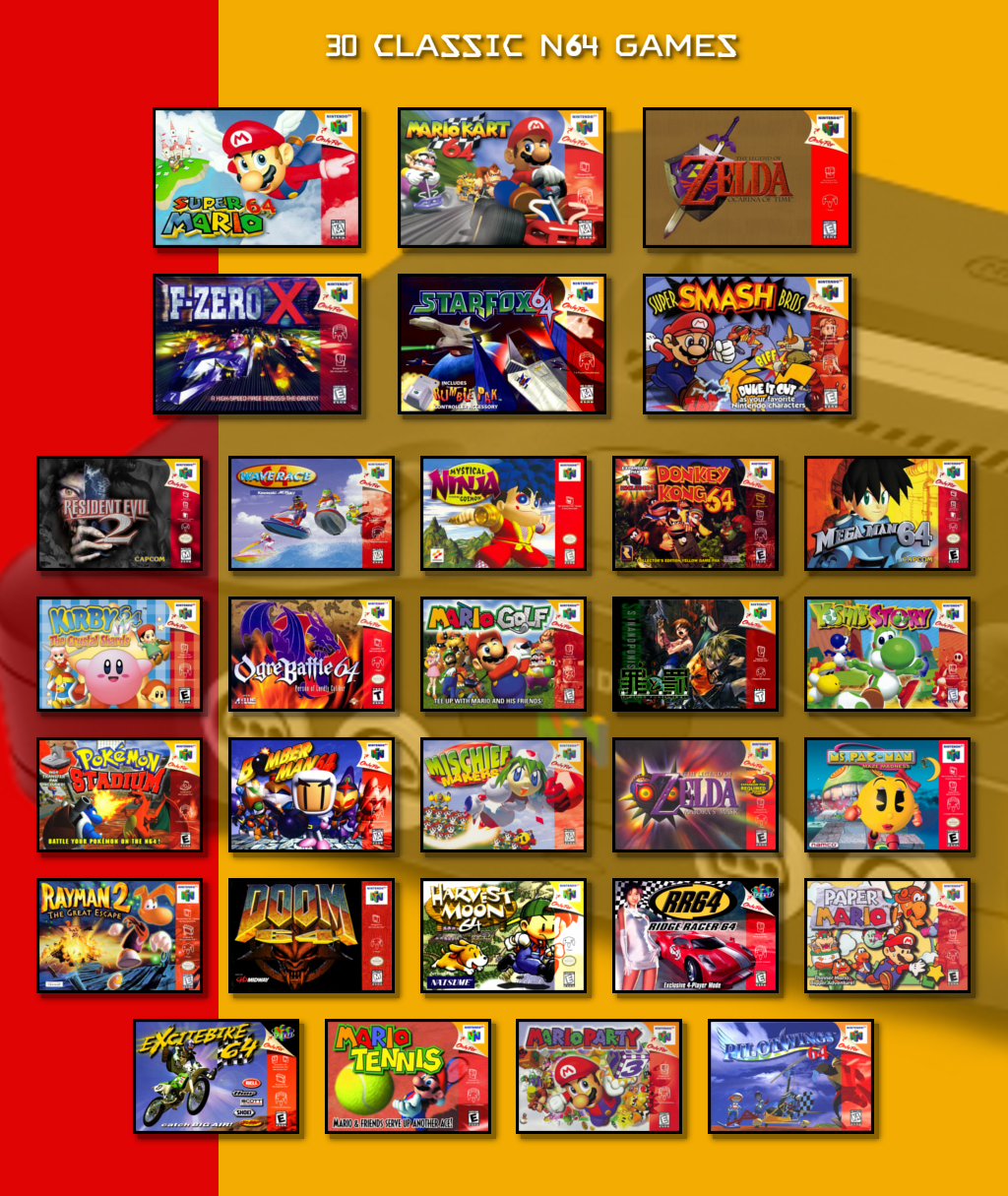 The NES Classic Edition came bundled with 30 games. Titles like Super Mario Bros., The Legend of Zelda, Punch-out, Final Fantasy, Mega Man, Ninja Gaiden, Bubble Bobble and many more made for a diverse, fun roster.
The NES Classic Edition came bundled with 30 games. Titles like Super Mario Bros., The Legend of Zelda, Punch-out, Final Fantasy, Mega Man, Ninja Gaiden, Bubble Bobble and many more made for a diverse, fun roster.
The Super NES Classic reduced the number of games to 21 but included a never-before-released title in Star Fox 2, originally canceled in 1995 only to be reborn in 2017. The Nintendo 64 though? I'll be frank; I can't think of even 10 games that I could go back to and say, “Yeah, this holds up.” Mainstays like Super Mario 64, Mario Kart 64, The Legend of Zelda: Ocarina of Time and Majora's Mask and Starfox 64 are a given, but things start to get a little iffy. Sure, there are some pretty great titles out there that were even published by Nintendo, but various factors since their launch mean that a huge portion of them couldn't be included on a Nintendo 64 Classic today.
Arguably the best Nintendo 64 game ever made is Goldeneye 007. It struck an amazing balance between single player campaign and 4-player multiplayer Deathmatch, not to mention revolutionizing playability as a first-person shooter on a console all the way up until Halo shook up the game in 2001. However, there's a reason the original N64 Goldeneye hasn't been re-released or even properly remade; a little thing called licensing. At the time, Goldeneye's developer, Rare, were second party to Nintendo, but things got a little heated between the Big N and Rare in the Gamecube days. Rare would end up being bought out by Microsoft and as a result, there hasn't been a Rare game on a Nintendo home console since Star Fox Adventures in 2002.
No Goldeneye is a pretty serious blow, but the Microsoft factor shuts the door on a lot of other big franchises as well. Games like Banjo Kazooie, Jet Force Gemini, Blast Corps, Perfect Dark and even Conker's Bad Fur Day – all originally Nintendo 64 games - all ended up being included on Rare Replay for the Xbox One or released on Xbox Live Arcade.
So what are we left with? Paper Mario is a great RPG, Yoshi Story is a given, Mischief Makers is a fantastic platformer from Treasure, Ogre Battle 64 could definitely work and Pilotwings 64 would be great. Mario Golf could be pretty decent and Smash Bros is a given, as long as 4-player support is maintained. Nevertheless, what else could really be considered great that falls in line with the required E-to-T ratings? Bomberman 64? Mega Man 64? Mystical Ninja? Snowboard Kids? Decent games, sure, but nowhere near “classic.” And how could Nintendo license the Star Wars games like Pod Racer and Rogue Squadron without breaking the bank these days?
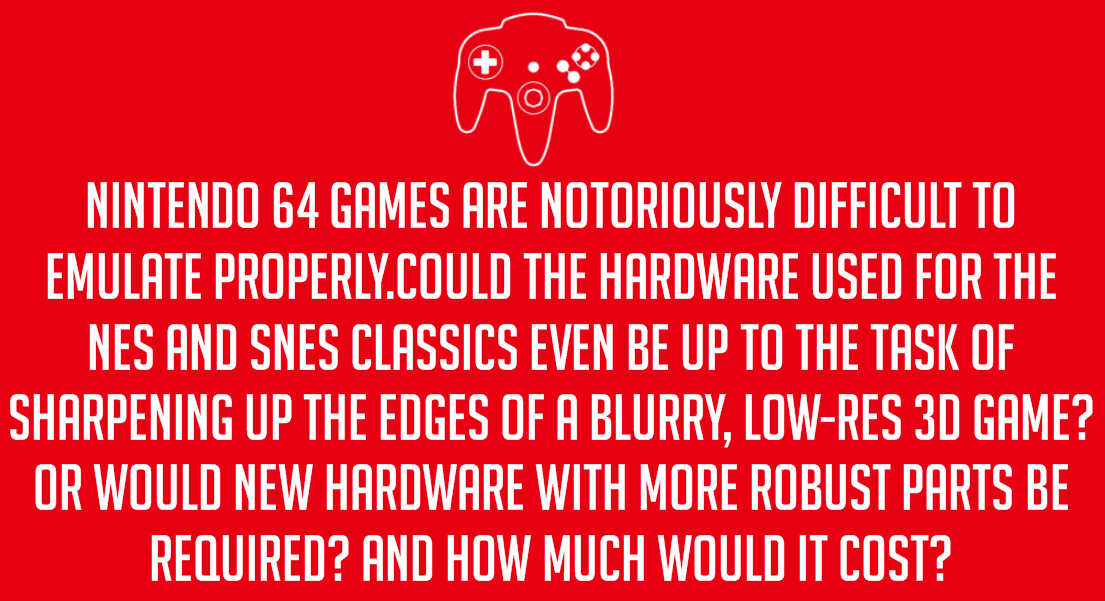
There's also the question of how many games are going to be on the unit to begin with. With 30 on the NES Classic being reduced to 21 for the SNES Classic, could the Nintendo 64 Classic only have 15 games? 10? Could Nintendo release titles that were made only for the Nintendo 64DD? These are the sorts of questions that require good answers if a Nintendo 64 Classic ever came to fruition, but there are other factors that might actually get in the way of getting some titles onto the unit to begin with.

The Nintendo 64 Expansion Pak is an add-on that added a significant amount of memory to the Nintendo 64 to boost the graphical fidelity of the system. Although the additional memory allowed for some huge environments and sharp textures, this often made the system slow to a crawl in some games.
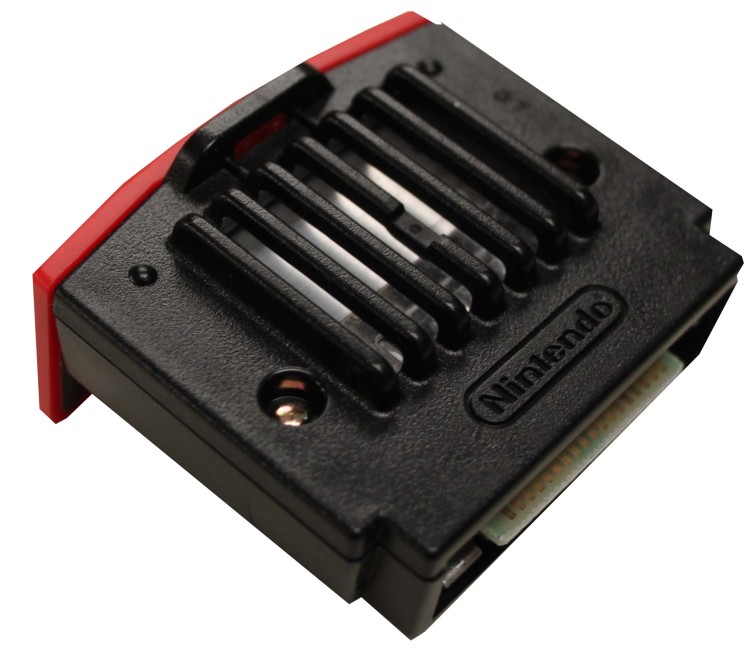 The Expansion Pak was an add-on that was required for some games to run but one in particular, Donkey Kong 64, relied on the Expansion Pak in unexpectedly critical ways. A game-breaking bug is buried within every copy of the game. The solution? The Expansion Pak naturally, and it was all because of the fact that the bug didn't affect the game when an Expansion Pak was present, Nintendo just bundled the Expansion Pak with every copy of Donkey Kong 64. The Expansion Pak would need to be “active” in the system at all times, if a game like Donkey Kong 64 is to be included. Assuming this is an easy software process, no trouble, but if a game like Donkey Kong 64 misbehaved like that on original hardware; who could say that the others won’t misbehave in the emulated environment that a Nintendo 64 Classic would run in?
The Expansion Pak was an add-on that was required for some games to run but one in particular, Donkey Kong 64, relied on the Expansion Pak in unexpectedly critical ways. A game-breaking bug is buried within every copy of the game. The solution? The Expansion Pak naturally, and it was all because of the fact that the bug didn't affect the game when an Expansion Pak was present, Nintendo just bundled the Expansion Pak with every copy of Donkey Kong 64. The Expansion Pak would need to be “active” in the system at all times, if a game like Donkey Kong 64 is to be included. Assuming this is an easy software process, no trouble, but if a game like Donkey Kong 64 misbehaved like that on original hardware; who could say that the others won’t misbehave in the emulated environment that a Nintendo 64 Classic would run in?
There's also the issue of resolution. The Nintendo 64 ran in 320i, an odd in-between resolution that would be upscaled in weird ways. Some games ran in 480i, which is a little more manageable, but in any case, 3D games would look pretty bad on modern sets, even if only upscaled to 720p. Star Fox and Star Fox 2 on the SNES classic came away looking pretty jarring when all is said and done. If the N64 Classic is to truly succeed, upscaling the 3D edges of the games at the very least is going to save a lot of people a lot of headaches.
However, this bring to light another major problem; Nintendo 64 games are notoriously difficult to emulate properly. Even on the Wii Virtual Console, a lot of effects such as the explosions in Star Fox 64, for example, came away dark and less vibrant than the N64 original. Could the hardware used for the NES and SNES Classics even be up to the task of sharpening up the edges of a blurry, low-res 3D game? Or would new hardware with more robust parts be required? And how much would it cost?

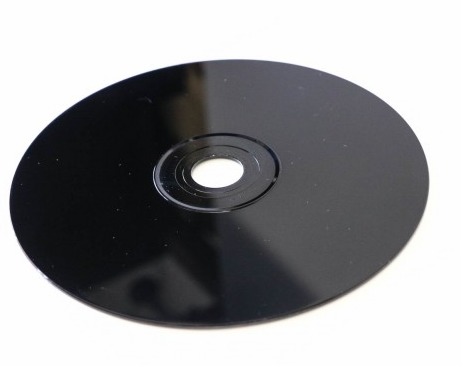 When it all comes down to it, all of these factors stack heavily against a Nintendo 64 Classic Edition, but there's one more factor that really ties it all together: The Nintendo 64 was heavily outsold by the PlayStation and was generally unpopular due to Nintendo's stubbornness and essential lack of great games. A Sony-produced PlayStation Classic would be a much, much more popular machine since, let's be honest, the Sony PlayStation had a vastly superior software catalog compared to the N64. The NES was much more popular than the Sega Master System, so the NES Classic's popularity is expected. In North America, anyway, the Super NES reigned supreme over the Sega Genesis and again, we can see this as several Sega Genesis clones have come and gone with little to no fanfare.
When it all comes down to it, all of these factors stack heavily against a Nintendo 64 Classic Edition, but there's one more factor that really ties it all together: The Nintendo 64 was heavily outsold by the PlayStation and was generally unpopular due to Nintendo's stubbornness and essential lack of great games. A Sony-produced PlayStation Classic would be a much, much more popular machine since, let's be honest, the Sony PlayStation had a vastly superior software catalog compared to the N64. The NES was much more popular than the Sega Master System, so the NES Classic's popularity is expected. In North America, anyway, the Super NES reigned supreme over the Sega Genesis and again, we can see this as several Sega Genesis clones have come and gone with little to no fanfare.
But the Nintendo 64 was actually a distant second behind the Playstation with just under 33 million units 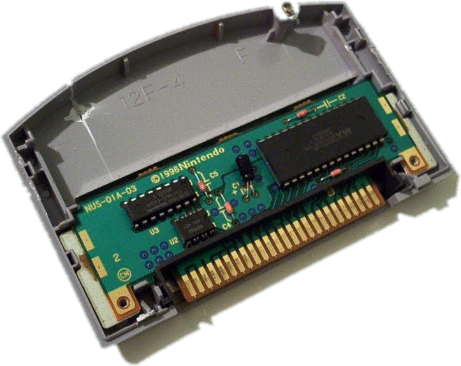 sold worldwide compared to Sony's insane 102 million. It's easy to see that the Playstation was just a better system to own, using much cheaper, more flexible media and supporting perhaps the greatest all-encompassing catalog of games the world has ever seen. Basically, the Nintendo 64 isn't as Classic as one might hope, instead playing second fiddle to Sony's virtuoso.
sold worldwide compared to Sony's insane 102 million. It's easy to see that the Playstation was just a better system to own, using much cheaper, more flexible media and supporting perhaps the greatest all-encompassing catalog of games the world has ever seen. Basically, the Nintendo 64 isn't as Classic as one might hope, instead playing second fiddle to Sony's virtuoso.
As such, the idea of a Nintendo 64 Classic Edition might sound alright to a lot of you on paper, but in practice, the end result would almost certainly be underwhelming at its best... and a complete letdown at its worst. Now a Game Boy Classic on the other hand... that's just about a complete opposite situation!